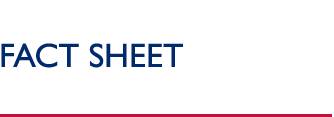USAID Fights Neglected Tropical Diseases
FOR IMMEDIATE RELEASE
February 22, 2008
Press Office: 202-712-4320
Public Information: 202-712-4810
www.usaid.gov
On February 20, 2008, President Bush challenged the world to reduce and eventually control and eliminate the burden of neglected tropical diseases (NTDs) as a major threat to health and economic growth in the developing world. The new Presidential Initiative for NTD Control will increase the United States' commitment to NTDs from $15 million in 2008 to a total of $350 million over five years. These funds will provide integrated treatment to more than 300 million people in Africa, Asia, and Latin America. In addition, the new initiative will expand the targeted number of countries from 10 in 2008 to approximately 30 by 2013.
The initiative will build on U.S. Agency for International Development (USAID) investments in NTDs control and will target seven major diseases: lymphatic filariasis (elephantiasis); schistosomiasis (snail fever); trachoma (eye infection); onchocerciasis (river blindness); and three soil-transmitted helminthes (hookworm, roundworm, and whipworm).
Approximately one billion people, mostly in the developing world, suffer from one or more NTDs. Seven of these diseases - the seven targeted by the new initiative - can be controlled and even eliminated through targeted mass drug administration. Most of these diseases either blind, deform, or debilitate their victims. In addition, they can contribute to limited school enrollment, diminished childhood growth and cognitive development, and reduced economic productivity in adults. Treating the millions of people who suffer from NTDs will help to change these negative effects and to improve not only personal health, but also economic growth at large.
USAID's Commitment to Fighting NTDs
USAID began an integrated NTD control program in 2006, focusing initially on five countries in Africa - Burkina Faso, Ghana, Mali, Niger, and Uganda. In its first year of implementation, this program delivered more than 35 million NTD treatments to more than 14 million people. The program is now expanding to Haiti, Sierra Leone, and southern Sudan, and at least two additional countries will be added in 2008. USAID has invested $30 million to date in this NTD control program.
Key Partnerships
Most drugs needed to treat NTDs have been donated by pharmaceutical companies, including GlaxoSmithKline, Johnson & Johnson, Merck, and Pfizer. These donations are valued at hundreds of millions of dollars each year, and may reduce the estimated cost for other program components to between 40 cents and slightly more than one dollar per person, per year in Sub-Saharan Africa.
In addition to the pharmaceutical industry, USAID works closely with the Ministries of Health in each country and key international partners who are leading efforts in NTD control.
The United States will further enhance efficiency and efficacy in the new NTD control program by leveraging existing initiatives such as the Basic Education Initiative, the President's Malaria Initiative, and the President's Emergency Plan for AIDS Relief.
The United States will work in partnership with countries struggling with overlapping disease burdens. These countries will have the opportunity to be selected based on a competitive grants process to receive additional support. This will ensure an integrated country specific approach to fighting NTDs.
For more information on USAID and its Infectious Disease programs, visit www.usaid.gov. The White House announcement may be found at www.whitehouse.gov.
Back to Top ^
|


